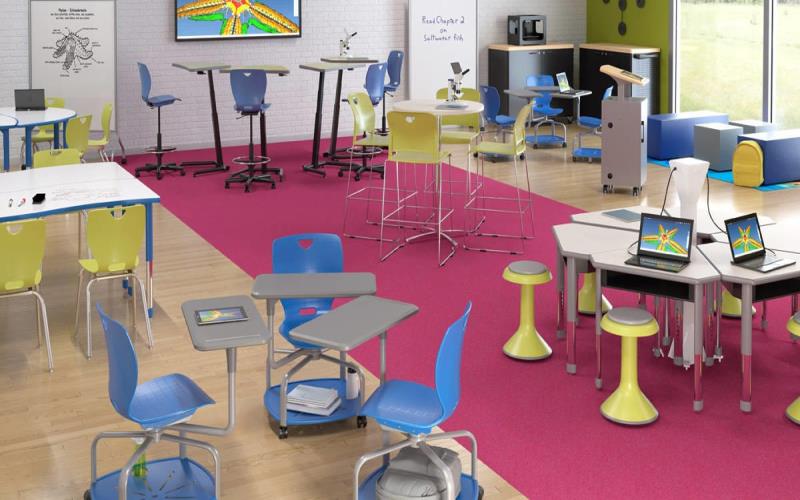When it comes to students having a great education, their environment must be comfortable. You don’t want their classroom setting to be too boring, but it shouldn’t be too overstimulating either. An often overlooked yet crucial aspect of this environment is the classroom chair. This gives students the comfort they need to pay attention in class and get their work done on time. If their chair is too uncomfortable, it’s all they’re going to be thinking about. Both schools and teachers need to think about what the best classroom chair options are to ensure that students are getting the comfort they need to excel in class.
The Significance of Ergonomic Design
An ideal classroom chair goes beyond aesthetics; it incorporates ergonomic principles that prioritize the health and well-being of students. It’s important to search for chairs that are designed with the human body in mind. In the context of classroom chairs, this means creating a design that supports the natural curvature of the spine, promotes good posture, and minimizes stress on the muscles. Consider the chair’s height above the desk; it should allow students to sit with their feet flat on the floor and knees at a 90-degree angle. This alignment reduces the strain on the lower back and promotes better blood circulation. These chairs are great at having students focus on their posture and keeping themselves engaged in the classroom.
Comfort as a Catalyst for Learning
Student comfort is not just a matter of physical well-being; it directly influences cognitive function and academic performance. Discomfort caused by poorly designed chairs can lead to distractions, restlessness, and a decreased ability to focus. When students feel comfortable in their environment, they are more willing to learn the lesson. Ergonomically designed chairs can alleviate physical discomfort and contribute to a positive psychological state. When students are at ease physically, they are more likely to participate actively in class discussions, collaborate with peers, and absorb information effectively. The ripple effect of a comfortable chair extends beyond the immediate classroom experience, impacting the overall quality of education.
Versatility in Design
Recognizing the diverse needs of students, an ideal classroom chair should exhibit versatility in design. Some chairs are easily adjustable, so each one can match the student’s height and needs. This is a great feature for a chair and students can enjoy adjusting it to their specifics. The material and construction of the chair contribute to its versatility. A chair made from high-quality, durable materials not only withstands the rigors of daily use but also provides long-term comfort. Easy-to-clean surfaces are also advantageous, maintaining a hygienic and aesthetically pleasing learning environment.
Aesthetics and the Learning Environment
While ergonomic design and comfort take precedence, the aesthetic appeal of classroom chairs should not be neglected. The visual aspect of the learning environment contributes to the overall ambiance and can influence students’ attitudes toward the educational process. Chairs that are visually appealing and complement the overall classroom decor create a more engaging and positive atmosphere. Incorporating color psychology into chair design can enhance the learning experience. For instance, calming tones like blues and greens may promote a sense of tranquility, while vibrant colors can energize the space. Everyone needs to enjoy fun chairs every once and a while.
In the pursuit of an ideal classroom chair, the convergence of ergonomic design, student comfort, and visual appeal emerges as a key consideration. While it’s easier to go find basic chairs, you want to put your students’ needs first. If they aren’t comfortable in the chair, then they aren’t listening. Choosing chairs that can be adjustable and provide comfort can make all the difference. Instead of worrying about your students, everyone can enjoy their lesson in peace. Creating a more inviting classroom and showing that you care about your students and their needs.

